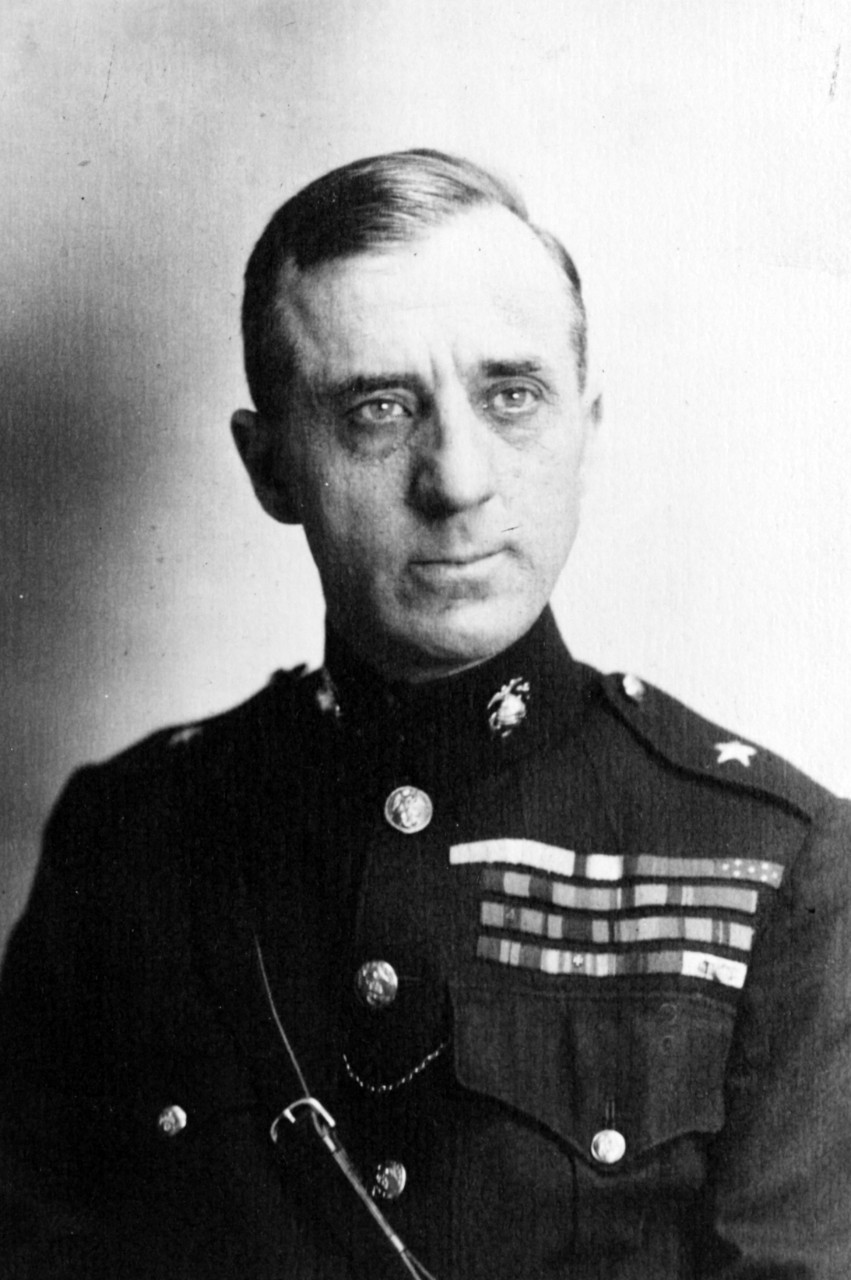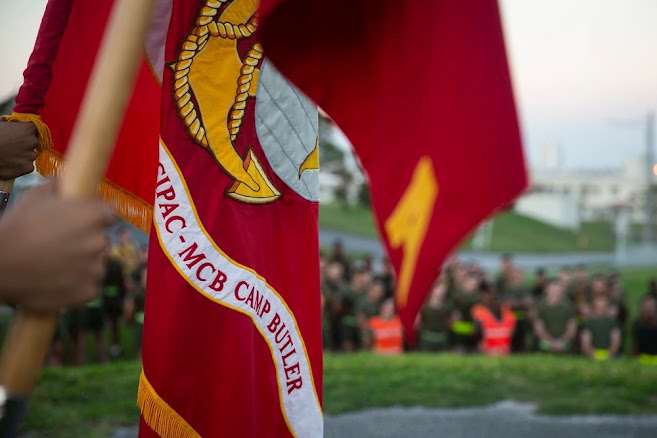Review by Bill Doughty––
Ninety years ago this month –– May 1932 –– thousands of military veterans marched on Washington D.C. and set up a tent city near the Capitol and within sight of the USS Constitution (pictured above).
In Congress, the House of Representatives passed a bill authorizing pay to the veterans, but Republicans in the Senate declined to pass it. President Herbert Hoover had vowed to veto the bill anyway.
Hoover would soon order Army Generals Douglas MacArthur and George C. Patton to move against the marchers and get them out of Washington.
Running out of food by July, the Bonus Marchers threatened to storm the Capitol.
 |
| Butler |
He also suggested a different tactic instead of marching on the Capitol: “When you get home, go to the polls in November… Now go to it!”
Butler warned the marchers against violence against the government, according to author Jules Archer, author of “The Plot to Seize the White House” (Hawthorn Books, 1973).
“You’re all right so long as you keep your sense of humor,” Butler said in is raspy hoarse voice, according to Archer.“ If you slip over into lawlessness of any kind, you will lose the sympathy of a hundred twenty million people in the nation,”
But it was Hoover’s administration that initiated the violence. MacArthur and Patton directed tanks, cavalry, infantry with bayonets, and a chemical weapon (adamsite, an arsenic vomiting-inducing tear gas) against the protesters, dispersing them and then burning down their tents and shacks. People did go to the polls in November. They elected Franklin D. Roosevelt, who righted the floundering economy, addressed greed and wealth inequality, and transformed the country with the New Deal, giving more power and protections to the people.
Butler explains how this New Deal did not sit well with bankers, industrialists, and rightwing groups (DuPonts, Remington, Standard Oil, J.P. Morgan, American Liberty League). And big media, under the control of big business, took on FDR and his progressive initiatives.
During his times in the Marines, as Smedley Butler rose in the ranks, he increasingly saw the influence of industrialists in the military and even in veterans’ ranks.
Some wealthy people, including bankers, funded the American Legion and used veterans to bust workers’ unions.
“The average veteran who joined the Legion in the 1920s had been unaware that big-business men were backing it to use it as a strikebreaking agency. When workers struck against wage cuts, Legion posts were informed that the strikers were communists trying to create national chaos so that the Reds could take over. Legionnaires were given baseball bats to break up strikes and civil rights demonstrations.”
 |
| Members of American Liberty League, implicated in a coup plot. |
Ironically, the conspiracy against FDR fell on Smedley Butler’s doorstep, when a representative of the American Legion, linked to the American Liberty League and funded by powerful businessmen, asked him to be part of a coup plot.
They planned to form a powerful paramilitary group modeled after France’s rightwing Croix de Feu (Cross of Fire); then, they would establish an “assistant president” as Secretary of General Affairs. The president would become a figurehead. According to the plan, veterans would rally around Butler as the de facto president of an authoritarian autocracy.
(J.P. Morgan reportedly preferred General MacArthur for the role, but MacArthur’s actions against the Bonus Marchers made him too unpopular with a wide swath of veterans.)
Fortunately, Butler, whose loyalty was to the Constitution, was the absolutely wrong man for the job.
 |
| Spivak |
Archer’s “The Plot to Seize the White House” is dedicated to reporters George Seldes and John L. Spivak “for their courageous dedication to the truth, wherever it led.”
The book is about the plot, but it’s also a fascinating biography of the great, complicated Marine general, an icon in United States Marine Corps history.
Smedley Butler served in the Spanish-American War, Philippines Campaign, Boxer Rebellion, Caribbean Intervention, Chinese Intervention of 1927-8, and World War I.
Archer describes him as “one of the most colorful generals who had ever led troops into battle.” He writes, “Smedley Butler was a wiry bantam of a man, shoulders hunched forward as though braced against the pull of a heavy knapsack, his hawk nose prominent in the leathery face of an adventurer.”
When he commanded Quantico he built a football stadium with and for Marines. He promoted health, fitness, and wellness for wounded warriors.
“He was even more famous and popular among rank-and-file leathernecks, doughboys, and bluejackets for the fierce battles he had fought against the American military hierarchy on behalf of the enlisted man. He was also admired, respected, and trusted because of his one-man fight to compel Americans to remember their tragic war casualties hidden away in isolated veterans’ hospitals.”
Popular for his skill as an “enormously persuasive speaker” –– Butler toured VFW posts. He saw growing divisions and right-wingers willing to believe in conspiracies.
“Continuing his tour for the VFW, Butler observed more and more storm signals flying in the United States as he traveled around the country. The nation was rapidly becoming polarized between the forces of Left and Right. Demagogues with apparently inexhaustible funds for propaganda and agitation led ‘patriotic’ crusades against Communists, Jews, and ‘Jewish bankers,’ who were alleged to be behind the New Deal.”
Butler was called before the House of Representatives to testify about the attempt by industrialists via the American Legion to subvert democracy and “seize the White House,” according to Archer.
The first “House Un-American Activities Committee” was “equally oriented against Fascist and Communist activities, according to Archer. “Under Representative John W. McCormack, later Speaker of the House, it spent considerable time and energy unmasking Fascist agents in America.”
Though written nearly fifty years ago, Archer’s book is invaluable for its perspective. He interviewed Butler’s immediate family members as well as contemporary reporters, witnesses, and researchers. And, Archer interviewed HUAC’s McCormack.
Archer writes: “I asked him, ‘Then in your opinion America could definitely have become a Fascist power had it not been for General Butler’s patriotism in exploding the plot?’”

Archer’s book led me to find “War is a Racket,” by Brig. Gen. Smedley Butler. It’s a short book published in 1935 based on Butler’s speech against war for profit and against big business’s influence in the military.
Butler was for a strong national defense but against using the military to fight wars to help commercial companies make profits.
 |
| Guarding Spanish POWs at Portsmouth Navy Base, New Hampshire, 1894; 1st Lt. Smedley Butler is standing, third from right. |
“I helped make Mexico, especially Tampico, safe for American oil interests in 1914. I helped make Haiti and Cuba a decent place for the National City Bank boys to collect revenues in. I helped in the raping of half a dozen Central American republics for the benefits of Wall Street. The record of racketeering is long. I helped purify Nicaragua for the international banking house of Brown Brothers in 1909-1912 … I brought light to the Dominican Republic for American sugar interests in 1916. In China I helped see to it that Standard Oil went its way unmolested.”
Butler expounds on what, a generation later, President Eisenhower would call the Military-Industrial Complex in a warning to the nation as he left office. Butler said the only way to stop the “racket” of war was by “taking the profit out of war.”
Archer’s insightful biography includes Butler’s antiwar beliefs and how those beliefs may have gone too far. According to Archer, “Butler’s raging hatred of war led him into the same errors of judgment that ensnared the isolationists of America.” Butler agreed with Neville Chamberlain’s strategy of appeasing Hitler, confident (but wrong) that the Nazis couldn’t successfully invade France.
On June 21, 1940, just hours before France was to surrender to Adolf Hitler, Maj. Gen. Butler died in U.S. Naval Hospital Philadelphia.
 |
| Gleaves-class destroyer USS Butler (DD-636) |
Marine Corps Base Camp Butler on Okinawa is another namesake of the great Marine warrior who came to hate war fought for what he considered the wrong reasons.
Butler believed war should only be conducted to defend the United States or the Constitution and Bill of Rights. He would have absolutely been against misadventures in Vietnam and Iraq. He would have also taken a stand against the insurrection at the Capitol and coup attempt of January 6, 2021.
 |
| Marine Corps Base Camp Butler, Okinawa. |
[One hundred years ago, 1922, Smedley Butler introduced the first English bulldog into the Marine Barracks, Quantico. Bulldogs have become the mascot of the Marines ever since, with Chesty, namesake of famous Marine Lieutenant General Chesty B. Puller, in residence at Marine Barracks, Washington, D.C.]







No comments:
Post a Comment